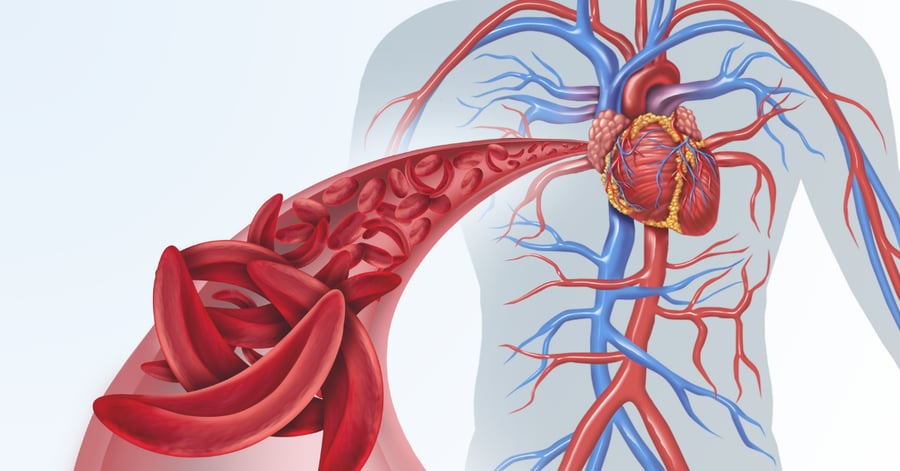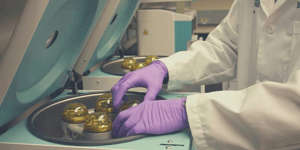Understanding Sickle Cell Disease: Research, Pain Management, and Community Impact
March 25, 2025 Posted by AHW Endowment

Sickle cell disease (SCD) affects more than 100,000 Americans and millions of people worldwide, causing severe pain and life-threatening complications. Despite affecting many people, SCD is widely misunderstood and under-researched. What causes this disease? How does it impact those who live with it? And what advances are being made to improve treatment and quality of life?
 In a recent episode of the Advancing a Healthier Wisconsin Endowment’s (AHW’s) monthly live stream, Coffee Conversations with Scientists, Cheryl Stucky, PhD, Marvin Wagner Endowed Professor at the Medical College of Wisconsin (MCW), shared insights into groundbreaking research on SCD pain management and the challenges faced by patients.
In a recent episode of the Advancing a Healthier Wisconsin Endowment’s (AHW’s) monthly live stream, Coffee Conversations with Scientists, Cheryl Stucky, PhD, Marvin Wagner Endowed Professor at the Medical College of Wisconsin (MCW), shared insights into groundbreaking research on SCD pain management and the challenges faced by patients.
Key Takeaways:
- SCD misshapes red blood cells, blocking oxygen flow and damaging organs.
- SCD has a high prevalence in African, Caribbean, and Hispanic populations.
- Pain caused by SCD is severe and complex, often leading to misunderstandings in emergency rooms.
- Gene therapy and bone marrow transplants offer hope but are costly and limited.
- Blood donations, awareness, and research funding are crucial to improving SCD care.
What Is Sickle Cell Disease?
Sickle cell disease is an inherited blood disorder that affects hemoglobin, the protein responsible for carrying oxygen in red blood cells. Unlike normal, flexible, donut-shaped red blood cells, those affected by SCD become stiff and crescent-shaped, making it difficult for them to move through blood vessels.

Graphic from Coffee Conversations with Scientists episode February 27, 2025
“These sickled red cells get stuck in the capillaries, block the capillaries, and lead to something called vaso-occlusion, where blood cannot get to the tissues.” explained Dr. Stucky.
The fragility of sickled cells also causes them to break apart more easily, releasing their contents into the bloodstream and triggering inflammation. Over time, this can lead to complications affecting multiple organs, including the heart, lungs, and kidneys.
Who Is Affected by Sickle Cell Disease?
While SCD is most commonly associated with Black populations in the U.S., it affects millions of people globally. Each year, approximately 500,000 babies are born with the condition, with the majority living in sub-Saharan Africa, India, and parts of the Caribbean.
In Wisconsin, about 1,300 individuals live with SCD, and approximately 25 babies are born with the condition each year. Around 80% of those affected in the state live in the Milwaukee area.

Graphic from Coffee Conversations with Scientists episode February 27, 2025
The Complex Pain of SCD and Treatment Advances
One of the most challenging aspects of SCD is the severe pain experienced during vaso-occlusive episodes—painful crises when sickled cells block blood vessels. These episodes can cause intense pain and require medical attention. According to Dr. Stucky, "Sickle cell pain is inflammatory, it's ischemic, and it's also neuropathic: it's more complex than other types of pain." Its complicated nature makes SCD pain difficult to treat effectively.
Dr. Stucky's research has identified a key protein in pain receptor neurons, known as TRPV1—a specialized pain sensor that responds to heat and certain chemicals—that contributes to both acute and chronic pain in SCD. While initial trials using TRPV1 blockers showed promise, they unfortunately interfered with the body's ability to sense heat, creating significant safety concerns. Now, researchers are exploring alternative approaches, such as repurposing anti-inflammatory drugs already approved for conditions like rheumatoid arthritis.
Beyond pain management, innovations in treatment such as gene therapy and bone marrow transplants (replacing the patient's blood-forming cells with healthy donor cells) offer hope for those living with SCD. These cutting-edge therapies have the potential to reverse the disorder entirely, though they come with significant challenges, including high costs and limited availability.
Hydroxyurea, a medication that helps prevent the formation of sickle-shaped cells, is a standard treatment that reduces the frequency of vaso-occlusive events but requires careful monitoring by healthcare providers.
As research continues to advance our understanding of SCD's complexities, more targeted approaches to both pain management and disease modification are being developed, potentially improving the quality of life for patients while working toward treatments that can cure the disease and be available to everyone who needs them.
Living with Sickle Cell Disease in Wisconsin
For Wisconsin residents, the state’s cold climate creates additional challenges. “One of the precipitating factors for a vaso-occlusive event is exposure to cold,” says Dr. Stucky. “Parents have to protect their kids from standing out at a bus stop in the cold weather, or jumping into a cold swimming pool.
Comprehensive care is essential for managing SCD effectively. Froedtert and the Medical College of Wisconsin offer specialized sickle cell clinics for both pediatric and adult patients. Established in 2011, the adult clinic was the first of its kind in Wisconsin, providing integrated services including pain management, infusion services, and routine healthcare. The clinic partners with Children's Wisconsin through the E.A.S.E program (Empower Adolescents with Sickle Cell Disease to Effectively Transition) to ensure smooth transitions from pediatric to adult care.
These specialized clinics exemplify the multidisciplinary approach necessary for SCD patients to maintain quality of life while navigating the complexities of this challenging blood disorder in a region where environmental factors can worsen symptoms.
Moving Forward: Community Support Makes a Difference
Raising awareness about SCD is important to improving care and reducing stigma. "It's really important for people to understand what sickle cell disease is, to spread the word to the community," explains Dr. Stucky.
One important way to make a difference is by donating blood. "You can donate blood, especially if you're Black American because normal healthy controls are the best match for individuals with sickle cell disease." Blood transfusions are a critical treatment for many sickle cell patients, and donors from diverse backgrounds are urgently needed.
To learn more about SCD research and Dr. Stucky’s work, watch the full Coffee Conversations with Scientists episode here:



